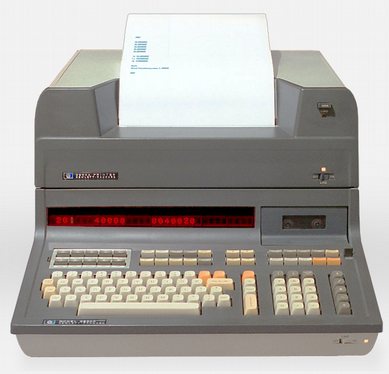
Everything old is new again. Apparently this holds true nowhere more so than in digital channels. When there are major, disruptive shifts in digital, the needle doesn’t just move. It moves straight across to the opposite pole, 180 degrees.
Why does this matter? It’s something digital strategists, marketers, advertisers, media companies and others must take into consideration as they look toward the horizon to plan and strategize. They must realize that in the future things will not only be different than they are now. They could well be the opposite of what they are now.
Following, three examples of the digital 180 degree rule.
Distributed to central to distributed Remember what started the internet revolution? It was the shift from network computing to desktop PC’s, from distributed to central computing. It freed users from dependency on a server – everything they needed was right on the desktop hard drive. The past five or so years have turned that advance on its ear. Computing is distributed again. We live in the cloud and rely on mobile devices as much (often more) than our laptops. As for the PC, it’s becoming something of a relic. The return to distributed computing changes everything about how and where users interact with digital channels.
 Walled garden to open internet to walled (well, solidly fenced) garden In the beginning there was Mosaic and the BBS. Not a lot of people were there. The internet began to achieve mainstream popularity when AOL (together with competitors such as Prodigy and CompuServe) inundated consumers with diskettes that, once installed on a PC, promised a graphical online browsing experience, provided you didn’t stray from the parameters of your content provider/ISP. As the “real” internet developed (and broadband proliferated), users ventured beyond these walled gardens into a brave new world. We’re beginning to witness an attempt by some of the major digital players to, if not confine users to a content-rich garden, then to at least make it more compelling for them to stay longer, and stray less often. Spearheading this trend is Facebook, working hard to become a one-stop destination for all the news, media, music, streaming video, communications, photos, games, apps and etc. you’d ever need. Why go anywhere else? This trend may not go a complete 180, but it will be interesting to see how Facebook, and perhaps Google, influence (or hog) traffic as each strives to become a one-stop destination for almost all your internet needs.
Walled garden to open internet to walled (well, solidly fenced) garden In the beginning there was Mosaic and the BBS. Not a lot of people were there. The internet began to achieve mainstream popularity when AOL (together with competitors such as Prodigy and CompuServe) inundated consumers with diskettes that, once installed on a PC, promised a graphical online browsing experience, provided you didn’t stray from the parameters of your content provider/ISP. As the “real” internet developed (and broadband proliferated), users ventured beyond these walled gardens into a brave new world. We’re beginning to witness an attempt by some of the major digital players to, if not confine users to a content-rich garden, then to at least make it more compelling for them to stay longer, and stray less often. Spearheading this trend is Facebook, working hard to become a one-stop destination for all the news, media, music, streaming video, communications, photos, games, apps and etc. you’d ever need. Why go anywhere else? This trend may not go a complete 180, but it will be interesting to see how Facebook, and perhaps Google, influence (or hog) traffic as each strives to become a one-stop destination for almost all your internet needs.
 Distraction from mainstream media to probable primary media access point. Remember when the web was going to obliterate newspapers, magazines, books, music and pretty much every other form of traditional media? It didn’t (and it won’t). The 180 degree shift we’re in the process of witnessing is the migration of all forms of media consumption to digital channels. Ebooks now outsell hardcover and paperback editions – combined (while ereaders are plummeting in price). Moreover, books are subsidized by advertising on some versions of the Kindle. As consumers cut the cord, TV viewing is migrating to digital, too. New platforms such as GetGlue and Miso make watching TV social, wrapping it up with promotions from retailers and media properties alike. The New York Times has more Twitter followers than print subscribers. Spotify delivers almost all the music in the world – free – if you share what you’re listening to with your Facebook friends. DIgital isn’t eradicating traditional media. Instead, it’s turned distribution, consumption and monetization models upside-down.
Distraction from mainstream media to probable primary media access point. Remember when the web was going to obliterate newspapers, magazines, books, music and pretty much every other form of traditional media? It didn’t (and it won’t). The 180 degree shift we’re in the process of witnessing is the migration of all forms of media consumption to digital channels. Ebooks now outsell hardcover and paperback editions – combined (while ereaders are plummeting in price). Moreover, books are subsidized by advertising on some versions of the Kindle. As consumers cut the cord, TV viewing is migrating to digital, too. New platforms such as GetGlue and Miso make watching TV social, wrapping it up with promotions from retailers and media properties alike. The New York Times has more Twitter followers than print subscribers. Spotify delivers almost all the music in the world – free – if you share what you’re listening to with your Facebook friends. DIgital isn’t eradicating traditional media. Instead, it’s turned distribution, consumption and monetization models upside-down.
In which area will we witness the next digital pole shift? Hypothesize in the comments, please.
All images licensed under Creative Commons
Walled Garden photo – mguhlin.wikispaces.com Newsstand: Joe Mabel
